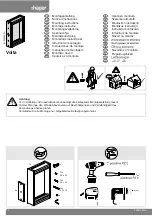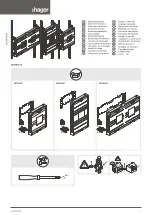
Design Guide
Page 19
©2015 Prinsco, Inc | 800.992.1725 |
05/15
Figure 9 - Prinsco Stormwater Quality Unit (SWQU)
Other simple systems can potentially provide the level of treatment required based on the site’s
characteristics and the required treatment standards of the local regulations. Other treatment
options include a manhole with a sump, gravity separators, hydrodynamic separators, and low
impact development methods such as swales and grass strips.
The design engineer on the project is responsible for designing the appropriate water quality
system based on the local regulations and requirements.
7.3
HydroStor Sediment Row
The HydroStor sediment row provides additional treatment for stormwater quality and enhances
the removal of Total Suspended Solids. The sediment row consists of a series of chambers installed
directly on top of two layers of woven geotextile fabric and is connected to a diversion manhole.
The two layers of nonwoven geotextile directly beneath the chambers provide filtration of water
leaving the row, capturing sediment and other pollutants within the row. Water in the sediment
row has no outlet other than the bottom of the chamber and is forced through the filter fabric,
providing the necessary filtration.
The sediment row is designed with a manhole and weir at the upstream end. The weir allows the
initial runoff at the beginning of a storm, often referred to as the “first flush”, to enter the sediment
row for filtration. Once the weir height is reached, the remaining water flows through the manifold
header and is distributed to the additional rows of the HydroStor chamber system. The manhole
with the diversion weir is connected to the sediment row with a short length of HDPE pipe up to
18” for the HS75 and 24” for the HS180. The downstream end of the sediment row has an end cap
with no outlet.
Two layers of a woven geotextile, meeting the requirements of AASHTO M288 Class 1 stabilization
fabric, are placed between bottom of the chambers and the stone foundation. This strong fabric
allows water to pass through the chamber into the base stone yet keeps sediment and other
pollutants within the sediment row. In addition the fabric provides a strong base for cleaning the
Summary of Contents for HydroStor HS180
Page 1: ...DESIGN GUIDE...
Page 35: ......
















































